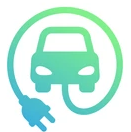EV sales continue to rise, but the last year of headlines falsely stating otherwise would leave you thinking they haven’t. After about full year of these lies, it would be nice for journalists to stop pushing this false narrative that they could find the truth behind by simply looking up a single number for once.
Here’s what’s actually happening: Over the course of the last year or so, sales of battery electric vehicles, while continuing to grow, have posted lower year-over-year percentage growth rates than they had in previous years.
This alone is not particularly remarkable – it is inevitable that any growing product or category will show slower percentage growth rates as sales rise, particularly one that has been growing at such a fast rate for so long.
In some recent years, we’ve even seen year-over-year doublings in EV market share (though one of those was 2020->2021, which was anomalous). To expect improvement at that level perpetually would be close to impossible – after 3 years of doubling market share from 2023’s 18% number, EVs would account for more than 100% of the global automotive market, which cannot happen.
Instead of the perpetual 50% CAGR that had been optimistically expected, we are seeing growth rates this year of ~10% in advanced economies, and higher in economies with lower EV penetration (+40% in “rest of world” beyond US/EU/China). Notably, this ~10% growth rate is higher than the above Norway example, which nobody would consider a “slump” at 94% market share.
It’s also clear that EV sales growth rates are being held back in the short term by Tesla, which has heretofore been the global leader in EV sales. Tesla actually has seen a year-over-year reduction in sales in recent quarters – likely at least partially due to chaotic leadership at the wayward EV leader – as buyers have been drawn to other brands, while most of which have seen significant increases in EV sales.


Everyone I’ve talked to said only charge your EV to 80% to get the maximum battery life. Charging to 100% should only be done if you are going on a long trip - you lose battery life but that is a price paid in 5-10 years while your trip is now.
Sorry, I thought you meant that you sit there waiting in the morning to get to 80%.
But no, it’s still enough. 80% charge gets you to 80 miles. Chopping that in half for an extreme cold day–and we’d be talking near 0F here, which is rare even in northern states–still gets you 40 miles. That’s enough for a typical American commute.
You also don’t discharge below some amount that I forget. Plus you want some buffer in case you have an emergency (if you go in the ditch a mile from home on that coldest day you better have enough power to keep the heater running until the rescue arrives)
40 miles is what I said, which might give you the typical commute - but it doesn’t leave room for anything else. Lunch errands, after work bowling league, emergencies and so on happen often enough that you really want some buffer and so the 100 mile claimed range is realistically marginal despite only needing less than 40 on the typical day.